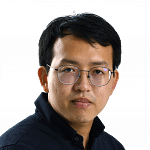CANBERRA - Singapore is turning to a larger and more powerful particle accelerator in Australia to boost scientific research in growing areas, including in nanofabrication, bioscience and agriculture.
A new five-year agreement inked on Monday allows Singapore researchers preferential access to the Australian Synchrotron, a high-end facility that accelerates electrons to close to the speed of light.
The synchrotron in Melbourne – more sophisticated than the one in Singapore – has capabilities that can reveal the microscopic structures of living organisms and advanced materials.
The deal means Singapore researchers will wait a much shorter time to use the synchrotron should their applications be approved, said Dr Jasbir Singh, a director at the National Research Foundation Singapore (NRF).
They no longer have to to compete with other overseas scientists who submit proposals for the use of the A$220 million (S$197 million) facility, which started operations in 2007.
The agreement was signed in Canberra by Professor Chen Tsuhan, the National University of Singapore’s (NUS) deputy president for research and technology, and Mr Shaun Jenkinson, chief executive of the Australian Nuclear Science and Technology Organisation, which operates the Australian Synchrotron.
Witnessing the signing were Trade and Industry Minister Gan Kim Yong and Australian Minister for Industry and Science Ed Husic. Mr Gan is on a visit to Australia for an annual meeting between the Singapore and Australian prime ministers.
A $16 million National Synchrotron Programme was launched on the same day to promote and anchor synchrotron research in Singapore. The programme will also seek other overseas partners through an international access initiative.
A synchrotron is a type of particle accelerator that spins electrons at high speeds, using magnets to keep them flowing in a circle.
At such high speeds, the electrons will produce an intense glow – more than a million times brighter than the sun. This light can be filtered for different scientific purposes, such as to study the composition of a metal or human tissue.
Compared with about 20 years ago when the Singapore Synchrotron Light Source was built, the Republic is doing a lot more today in the biosciences, said Dr Singh, who is in charge of national research infrastructure at NRF.
The materials being studied today have also advanced, such as carbon nanotubes, which have broad applications from sporting goods to electronics to defence.
“Our current synchrotron can only cater for a certain domain of the sciences. Because science has improved so much in Singapore, we need access to a lot more different kinds of high-energy sources,” he said.

Having access to such an “indispensable tool” for scientists would benefit researchers in many fields, from biomedical research and environmental sciences, to engineering, and even forensics sciences, added Dr Singh.
For instance, the mineral content of rice grains or vegetables grown in Singapore can be studied. The tool can also look at how diseases occur, including how cancer cells spread, or how lithium-ion batteries degrade.
The Australia Synchrotron can produce 3 gigaelectron volts of energy. The synchrotron at the NUS Kent Ridge campus can generate energy of up to about 0.7 gigaelectron volts.
The world’s biggest synchrotron, run by the Switzerland-based European Organisation for Nuclear Research, with a 27km circumference, can produce a much-higher 7 teraelectron volts.
There are more than 60 synchrotrons in the world. Other regional synchrotrons – such as those in Japan, China, and Thailand – were considered but Australia had the best international programme, said Dr Singh.
Australia is Singapore’s first international partner under the national programme, which also aims to build up local expertise in synchrotrons, such as how they work and how to run one. Such knowledge cannot be found with just a Google search, he added.
The director of the Australian Synchrotron, Professor Andrew Peele, said the facility is one of the largest and most significant standalone pieces of scientific infrastructure in the Southern Hemisphere.
“This new partnership will enable greater access to the specialised tools and techniques required to carry out important research and deliver strong outcomes for both nations’ scientific research capabilities,” he said.


